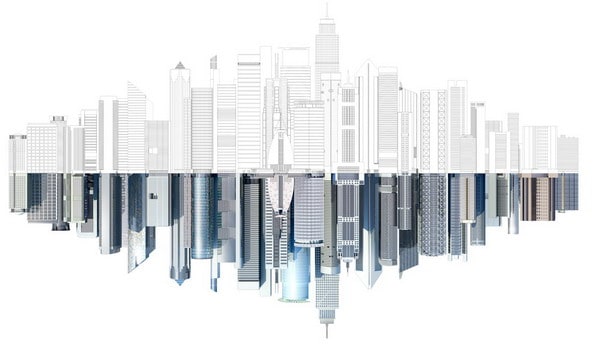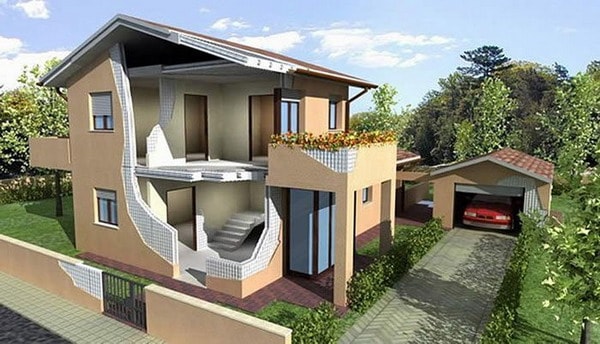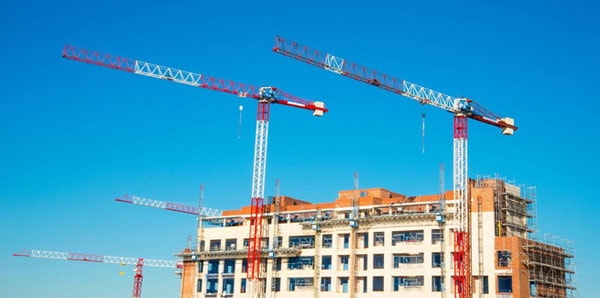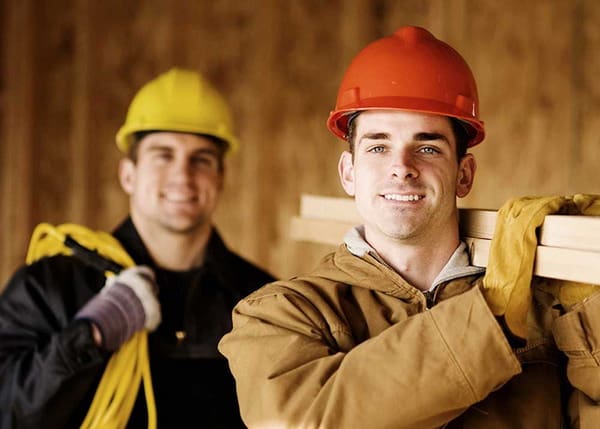It is true that trends come and go, however, some are able to remain and become the new standards of the future.
The economy is approaching a state of normality due to lower unemployment rates, increasing worker confidence and the growth of construction projects.
As we look to the future, we find some trends in the residential construction industry trends that can develop over the next three decades:
8 trends in architecture and the residential construction industry
Buildings even with greater height
If you take a look at the world, you can see how the buildings are taller and taller every year. This is a trend that shows no signs of slowing down. Very tall buildings are tending to become mini-cities that include a residential space, shops, restaurants, theaters and offices. In addition, architects will need to stand out in a market full of people who design buildings with original and strange shapes.
Increase in the efficiency of building materials
Dr. Ian Pearson of the UK equipment rental signature team created a report that predicts what the construction industry will look like in 2045. In a review of the report, Shane Hedmond points out that materials go beyond elements. structural and glass.
In order to accommodate taller, stronger and more versatile buildings, the construction industry is beginning to respond with improved building materials that maximize efficiency. Many of the materials that will be used in 30 years do not even exist today. For example, Pearson has predicted the appearance of special coatings that make solar panels more aesthetically pleasing.
Tougher buildings
The effects of climate change have created a growing demand for resistant buildings that can withstand anything that Mother Nature throws. Innovations in materials will probably lead to lighter versions and stronger versions of the old standards.
Prefabricated and misplaced construction methods
Another trend that we expect to see more in the coming decades is an increase in prefabricated and misplaced construction methods. These alternative practices reduce construction time and loss of unnecessary expenses. They are already becoming very popular in some industries, such as the health sector, but they are expected to expand in the coming years.
Innovation in BIM technology
BIM technology is very important now in 2017, but that importance will only grow in the future. Small and medium-sized construction companies are already beginning to adopt this trend that was only being used by large companies. In the next 30 years, BIM will be the essential and most valuable means to acquire and analyze key data.
Integration of 3D printing technology
There is a lot of movement around 3D printing technology, but once it is perfectly integrated into our daily construction practices, that impact will pass. There are high expectations and high hopes in 3D printing to facilitate working with the most artistic details and buildings.
Emphasis on environmentally friendly practices
Given the current state of our planet, green building practices will only become a standard in the coming decades. According to a report by Dodge Data & Analytics, green building accounts for between 26 and 33 percent of the residential market today and has helped the construction market recover after the recession.
This trend will continue to grow in the commercial and residential sectors, and LEED certification will be even more important. With each passing year, more building owners and tenants learn about the benefits of green building construction and renovations to increase energy efficiency and reduce energy costs.
Virtual reality and augmented reality
Marla McIntyre, editor of Construction Executive Tech Trends, recently raised the question of whether the construction industry will adopt AR and VR technologies. The article recognizes the intuitive and immersive attributes of headphones for construction. It is undeniable that more and more people are adopting this technology and discovering new applications for the AEC industry. The possibilities are virtually endless.
These will be the trends in the residential construction industry in 2021
It is expected that during the next year 2021, the residential construction industry will go through a series of significant changes
The industry of construction experience changes and trends throughout 2021 . Some of them will be:
Virtual and augmented reality
This will allow users to experience logistics to obtain a more accurate indicator of the project. It will help provide a real-world digital visualization with additional data to increase the experience and allow a 360 degree view.
The robotic
The use of drones is becoming increasingly popular among companies, which are used to inspect the workplace and ensure that workers stay away from dangerous situations.
The software for project management
Although the sector has been slow in adapting technology, the systems will be increasingly advanced and easy to integrate into the workplace.
Modules and prefabrication
Modular firms are doing great business, due to the significantly accelerated speed at which residential and commercial buildings can be built.
Ecological technology
The building “green” refers to building projects in an environmentally responsible and efficient use of resources so.
Safety equipment
The standards and use of better safety equipment products will continue to rise, to prevent accidents and deaths.
The construction industry, like other sectors, is constantly changing and innovating. Among the trends of 2018 are sustainable materials and architecture, building design, more efficient housing, home automation, among others.
The sector is expected to end this year with an important rebound, especially the residential area. With the increase in reforms, restorations and new designs, the residential construction industry is beginning to respond with improved materials and new solutions that maximize efficiency.
Some of the trends we find are:
- Sustainable Design: Comfort and efficiency determine the design, always adapting to the closest natural environment, promoting greater energy savings and using renewable energy materials. One of the trends is the designs that camouflage with nature, of modern appearance, with the green of the plants as the protagonist color.
Green buildings already account for 26% to 33% of residential buildings, and this trend will continue to grow in the commercial and residential sectors.
- Energy efficiency: They help reduce energy costs and are an excellent alternative to help protect the environment. The use of solar panels and other systems that take advantage of solar energy, are two of the great solutions in terms of air conditioning. Thermal bridge windows also help maintain an optimal temperature inside buildings.
- Minimization of noise: Noise is one of the great problems of today’s world, which must be regulated and controlled, for which insulation materials are being used that considerably reduce this problem.
- Home automation and smart homes: The internet of things (IoT) is one of the big trends in construction. Controlling our home from the mobile phone or tablet is becoming easier and less expensive. Furniture and smart appliances fully connected to each other, activating the lights, piped music, heating or washing machine with a single gesture and without being at home.
- Inclusion of new technologies: Resources such as 3D printers, facilitate work, resulting in buildings full of small details, reducing time and investment and labor.
- Dry construction : This is a construction system that requires less drying time, so they are faster and cheaper. In addition, they offer a wide variety of interior and exterior finishes, various materials such as plasterboard, wood, metal panels and glass are used.
- Modular structures: Using prefabricated elements is an innovative solution that allows reducing time and costs without losing quality.




